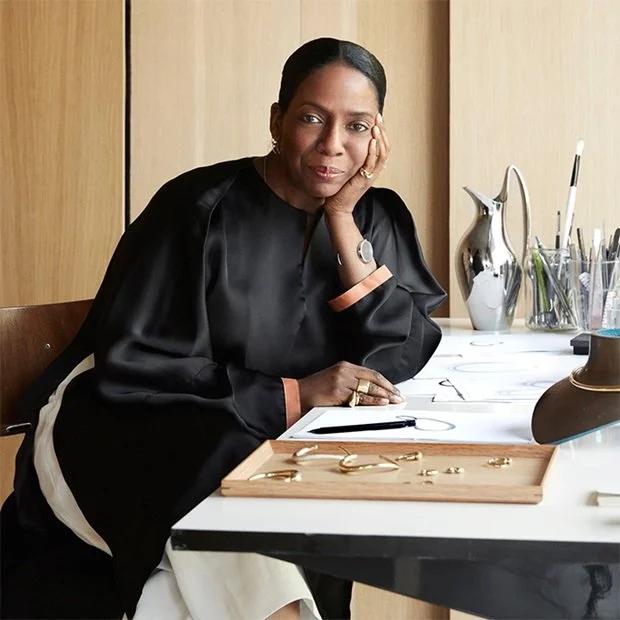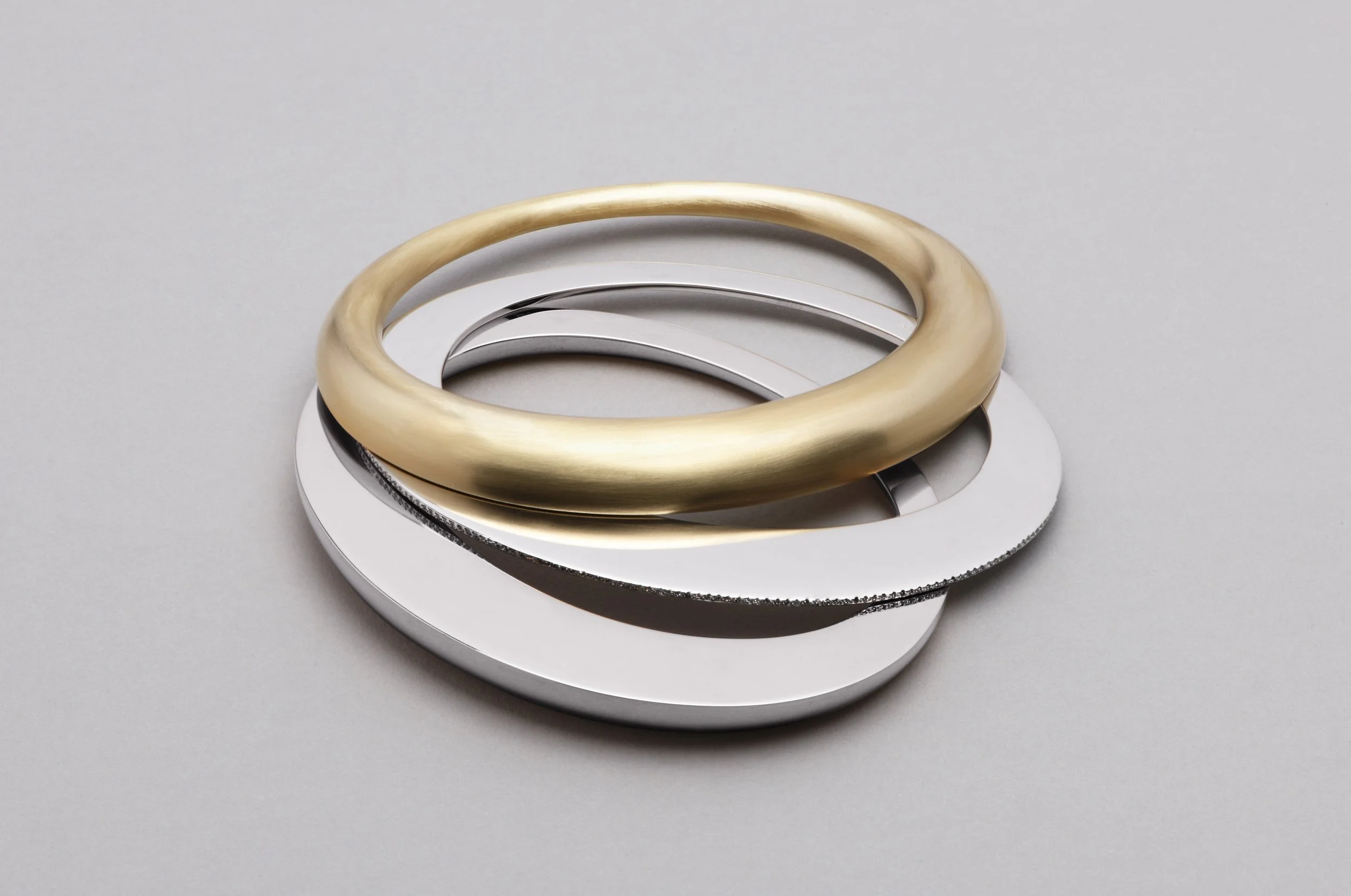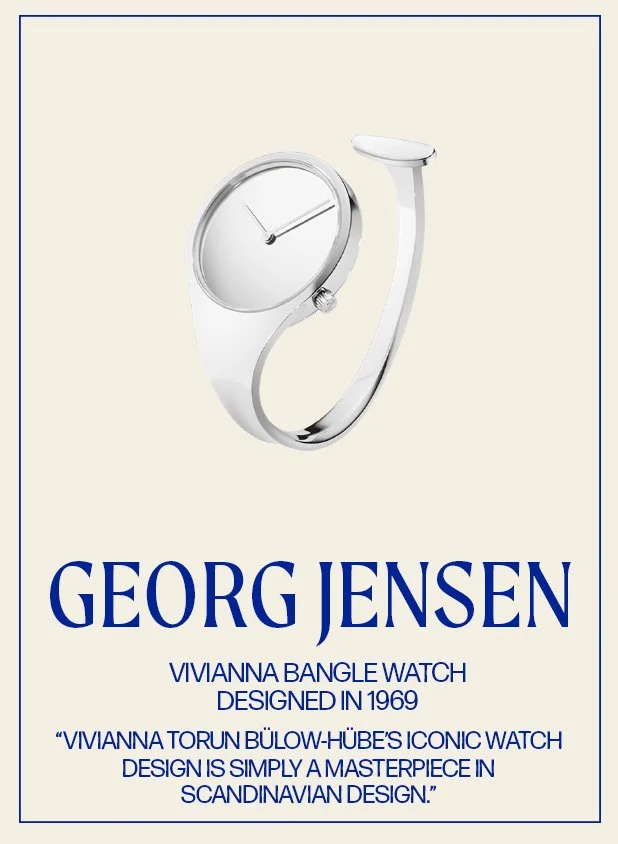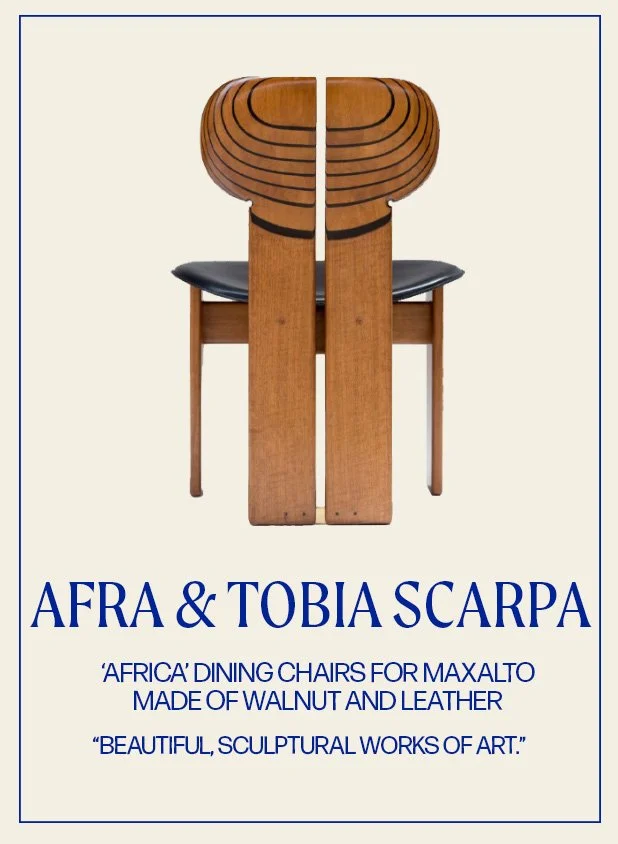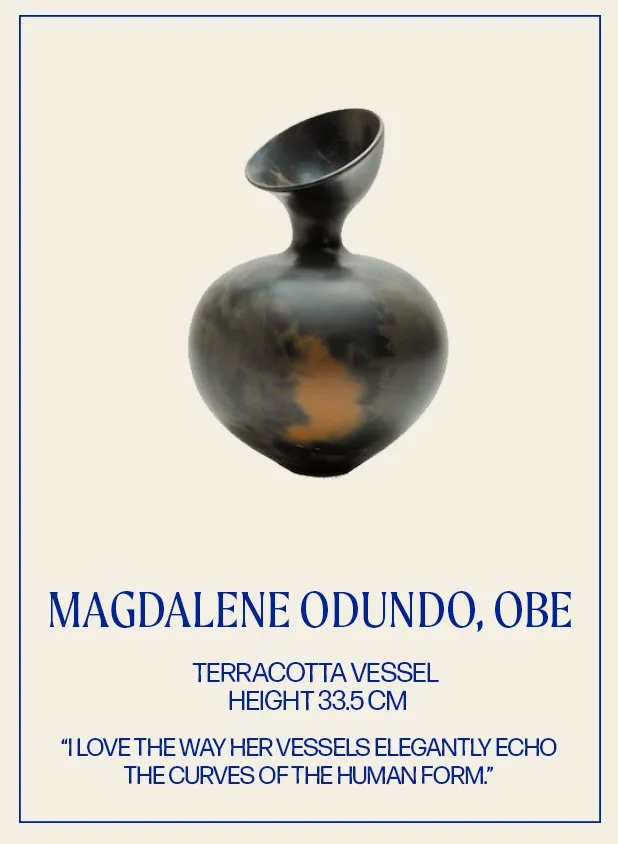The Mother of Jewelry On a Changing Industry
Courtesy of Jacqueline Rabun
JACQUELINE RABUN
The Mother of Jewelry On a Changing Industry
By Bonnie Langedijk
Describing Jacqueline Rabun as a jewelry designer alone is simply too simplistic. Her designs are wearable works of art, telling stories connected to the cycle of life. In a jewelry market that moves increasingly faster, the L.A.-based designer works at her own pace. But it didn’t start out that way.
Launching her own brand in her twenties without any prior design or business experience, Rabun’s first collection was picked up by Barneys. 10 Corso Como and Colette. The late Judy Blame bought some pieces for Neneh Cherry, while Rabun’s jewelry was featured on a 1992 Vogue cover, worn by Linda Evangelista. Rabun’s jewelry took off. Quickly. Longing to slow down, Rabun was introduced to Georg Jensen’s CEO, and two days later she started working for the Danish jewelry house. To date, her collections are some of the company’s most successful ones.
The jewelry market has gone through quite the transformation throughout Rabun’s career. In the past, there were a few established players defining the market. Fashion brands offering affordable jewelry followed, also known as ‘fashion jewelry’. It allowed customers to buy into a brand at a lower price point. The jewelry market became more trend-led, and seasonal. While jewelry makers had always been able to escape the rat race of newness that ready-to-wear designers were stuck to, luxury brands wanted more. In 2020, the global jewelry market reached $230 billion. By 2026, it’s expected to grow to $307 billion, and an increasing number of brands want a slice of the pie.
But jewelry didn’t start with brands and trends. Humans have worn jewelry for thousands of years. Serving as a marker of social status, a signifier of affiliation or as a talisman for protection. With the jewelry industry becoming faster paced and a more commercial environment, there’s a danger of the meaning behind adorning our bodies becoming more superficial. Not if it’s up to Rabun, who tells HURS how she really feels.
Courtesy of Jacqueline Rabun
Bonnie: I’ve been to your house in London and every object in that space felt like a clear choice. It comes very naturally to you, the curation of your space. Were you like this from a young age?
Jacqueline: Yes I was. Probably annoyingly [so] to my sisters. I was always quite particular about how I live or what I wear. I don’t care what anyone else does. And I don’t judge, you know. But for me, the way I liked to live life was just a certain way. I love beautiful things that are simplistic with a lot of emotion. You can feel when the designer has put their heart and soul in an object. I’m really drawn to the energy of it.
Yes, I get that.
Jacqueline: Scent is also important to me. That ritual in the morning of scent and clearing. What a cup of coffee is to some, to me is a clearing scent and a green tea. When we walk outside of our house, go out into the world, it can be pretty tough. So when you come back into your space, no matter how big or small it is, it should be soothing and comforting. You can let go, and just be.
And the great thing about scent is that it’s accessible to all. But let’s go back to jewelry. What was the jewelry market like when you started out?
Jacqueline: There were a handful of contemporary jewelry designers in the fashion space. There was very little competition. Everybody was doing their own thing. There wasn’t any overlap like you find today. There are a lot of jewelry designers at the moment. I think especially for women, it’s a really beautiful way of expressing your creativity. When I started out, there was no jewelry within fashion brands. I understand why they brought that product category into their brands. But sometimes it could be executed in a better way. Jewelry is very emotive and that’s why the idea of creating jewelry within the fashion space can be a bit throwaway. That’s maybe the right way to describe it. [But] that’s not what jewelry is about, historically.
“Jewelry is very EMOTIVE and that’s why the idea of creating jewelry within the fashion space can be a bit throwaway. .”
The speed of it all has changed. For me, jewelry and fashion should be something that lasts.
Jacqueline: I agree. With some brands it seems like an accessory rather than jewelry. I see jewelry as art, as sculpture. You should pass it onto your children. It carries a lot of stories and emotions, and it should be valued in that way.
Completely. I can imagine that working with Georg Jensen also allows you to work in that way.
Jacqueline: Before Georg Jensen approached me, I was juggling motherhood and my business. I always wanted a child. That was everything for me. I’d immersed myself into creating my first collection, Raw Elegance. Barney’s bought it, and 10 Corso Como and Colette followed. It was all coming at me. I was about 26 and had no business experience at all. I had ten employees. For a person like me, that was a lot. I wanted to take a different direction and I wasn’t sure what it was.
In 2002, I had dinner with friends of mine who lived in Paris. A photographer friend of theirs, Marc Hom, connected me with Georg Jensen’s CEO. They came to see me the following day and we started working together the day after. Literally like that. I got to slow down. [Working with Georg Jensen] allowed me to go deeper with my work and to find more of my design language. [How] to show my voice through my work. I hated that whole idea of seasonal jewelry. [The focus on] what’s new and what’s next. I don’t think that works for my jewelry.
Mercy Collection, Jacqueline Rabun x Georg Jensen
A Line of Love, created by Jacqueline Rabun in collaboration with Danish designer Nina Tolstrup of Studiomama
And you already knew about Georg Jensen?
Jacqueline: I already knew about Georg Jensen and I loved it. If you think about Scandinavian design and architecture, there’s a thread between the architecture in California in particular. My sister lived in a Lautner house, so I was already in that minimalist, Scandinavian way of living. [Georg Jensen] has a history of working with a lot of women too. Particularly with the jewelry. In fact, the most successful collections have been designed by women.
I didn’t know that. Do you think women designing for women offers a different perspective?
Jacqueline: Of course. It’s so different. We understand our bodies, how jewelry should sit on our bodies and how it should make us feel. The proportions and it not being too much. It should just become part of you rather than sort of scream out.
I also believe in it being a gift for yourself. For a long time the narrative has been so focused on men buying it for women. Sometimes the concept of jewelry feels quite traditional. I’d rather buy something really expensive for myself.
Jacqueline: Exactly. Because, why not right? That ideal that you have to wait for a man to buy you a piece of jewelry is super old fashioned. It was interesting, when I was in the [Georg Jensen] store on Saturday, most women that came in bought the jewelry for themselves. One woman bought five pieces for herself from the Mercy collection.
I love that. You’ve been in the jewelry space for a long time. How important do you find it to nurture new talent?
Jacqueline: I think it’s important. I’ve mentored a few young jewelry designers. You give them a lot of knowledge, which allows them to make fewer mistakes. It allows them to fast forward in a way. And learn through your experiences if they’re open to receiving [advice]. I think something that’s lacking is that [element of] going deeper, telling your story through your work. It could be that if someone’s young you wouldn’t have had a long journey to explore through your work. But if you want to connect with the wearer, it’s very important.
Maybe that’s also a link to the speed at which the industry operates now. That people don’t take the time to go deeper or maybe are a bit scared to.
Jacqueline: I think a lot of people don’t dare to go deep. And then maybe a lot of people haven’t had difficult lives and challenges. That there’s nowhere to go that’s deep. We’re all going to have it somehow, some way. Maybe they just haven’t hit that road yet. And, some people are born into that. It can be super challenging, learning how to navigate life when you’ve been dealt a not so very nice hand. But I’ve had my challenges, so therefore it wasn’t very difficult for me to go deep.
Courtesy of Jacqueline Rabun
Beautiful Bangle 18ct, designed by Jacqueline Rabun
That’s quite clear from the themes of your collections. They’re always very personal to what’s going on in your life. How is it for you to see these very personal stories in a store or to see others wearing them?
Jacqueline: We all kind of have the same story but different variations of it. We all have to go through a realm of emotions, that’s why we’re here. It’s a life journey. Because I tell my story, people tell me their story. Sometimes they’re quite sad stories.. One woman who bought the Mercy ring wrote to me and said, ‘Thank you for designing it, I bought it in memory of my son. He was a doctor and he committed suicide. When I wear the ring it helps me remember him in a positive way.’ Another woman writing about cancer, she bought the Mercy ring too. The Mercy collection seems to have that effect on people. The Offspring collection is about the celebration of the relationship between mother and child. So I hear a lot of stories about children or about people wearing Offspring to remember a mother who’s passed away. It’s always very emotional.
I also think that if you open up as a designer or creator, you create that space for others too.
Jacqueline: And it’s good. You need to open up. Talk about it, to the right people of course. But share. Because if you can share your story with someone, that person might be going through the same thing. It might help them. It could be life saving. I think people need to be a little bit more real. Especially with the times we’re living. It’s okay to say, ‘I’m not okay.’ The pandemic brought up a lot of emotion that probably needed to be brought up. I think for everyone.
It’s interesting. I met David Adjaye during the uprising. He’s so amazing. He reached out to me and we had all these zoom calls. I was reading an article where he talks about his brother. His brother was disabled, physically, and [the article explained] how that affects how he designs spaces. I actually think it also affects your personality and your character. You’re more compassionate, you have more empathy for people, just because you grew up like that. I have a similar story. When we were really small, my sister was playing with matches. It caught her nightgown. I was 2 [years old] and she was 3 [years old] and it burned 50 percent of her body. So when you live that everyday you become, you know, it wasn’t easy. Because when the kids teased her, I felt it. It allows you to go deeper in whatever you do or however you live.
I’m so sorry for your sister. I couldn’t agree more that experiences like that are so formative for the person you become. Through the challenges you’ve faced and experiences in life, what’s the most important lesson you’ve learned throughout the years?
Jacqueline: Well, Maya Angelou is famous for saying, ‘When people show you who they are, believe them the first time.’ It took me a while to embrace that wholly, but I do now.
This interview has been edited and condensed for clarity.




